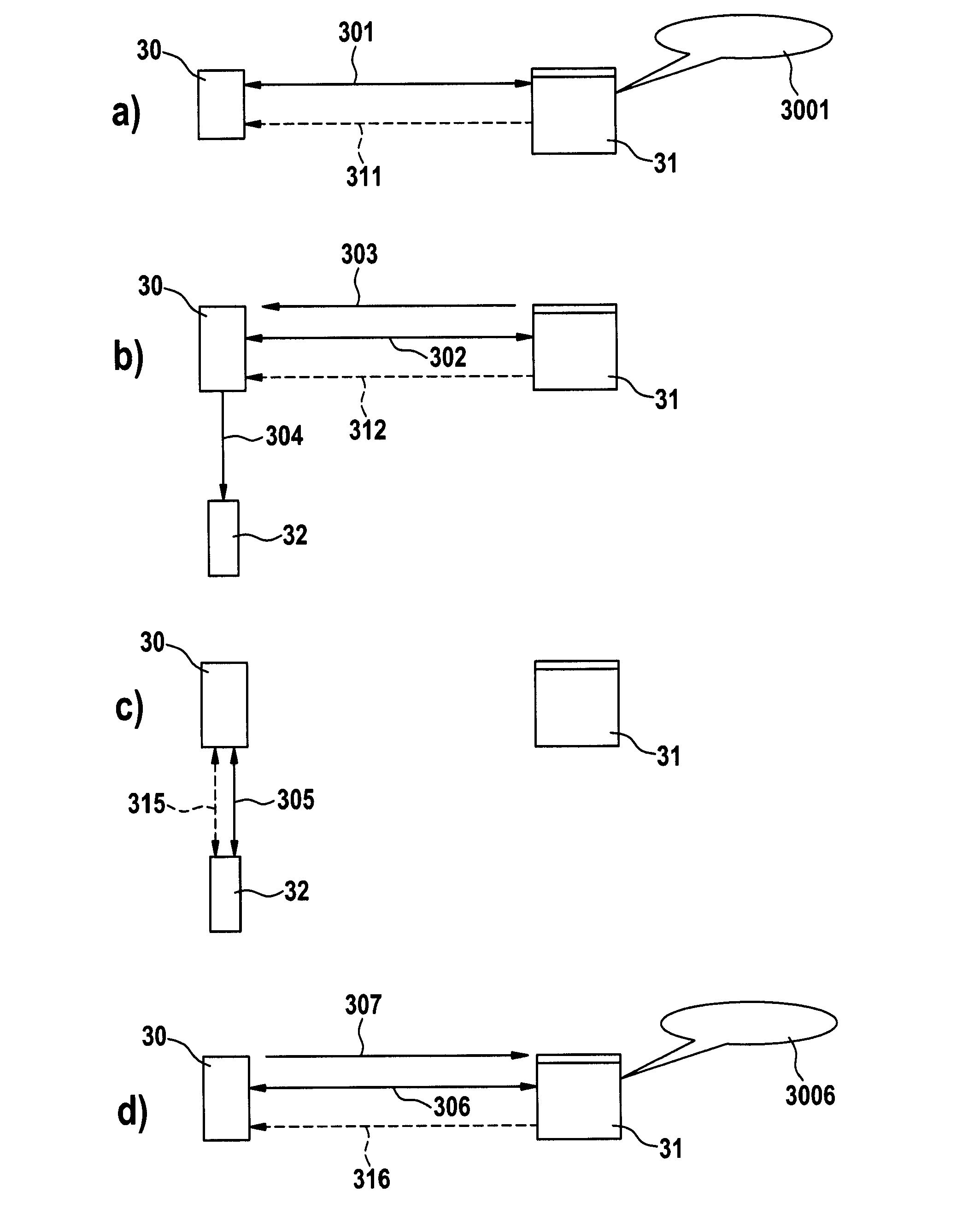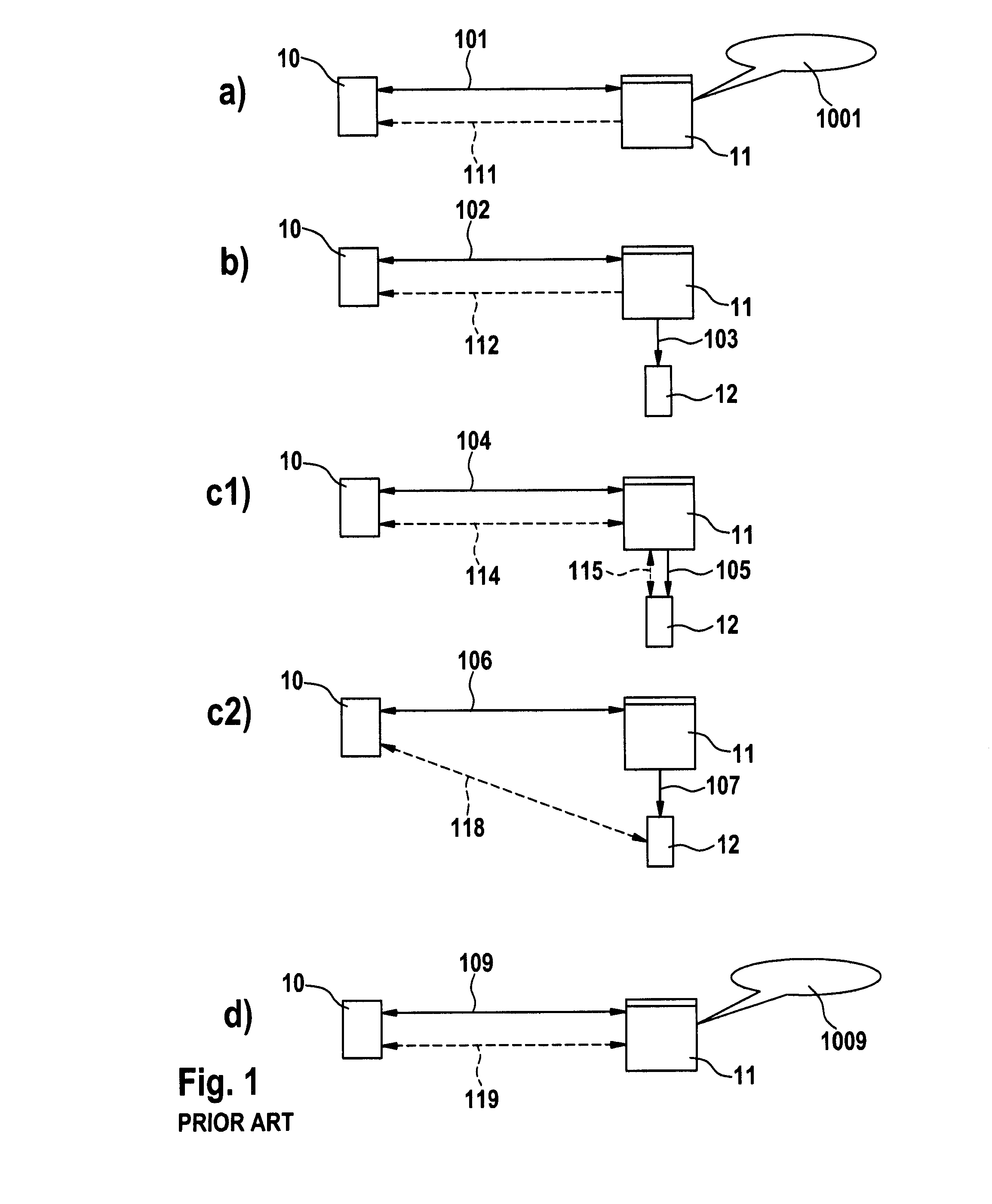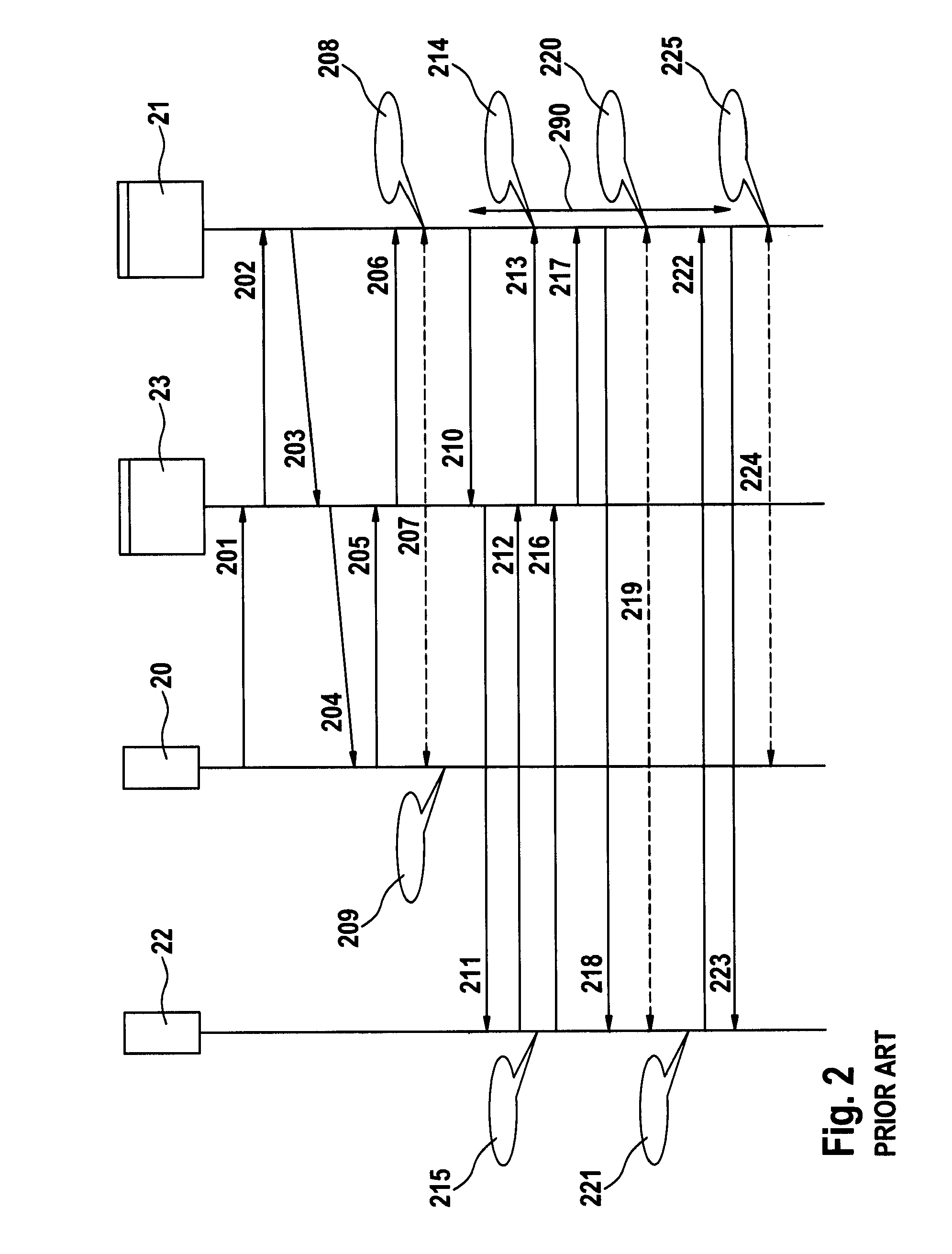Method of setting up a call-back
a call-back and call-back technology, applied in the field of call-back setting up, can solve problems such as complex networks, burdening the network, and mechanism not working in a multi-vendor environmen
- Summary
- Abstract
- Description
- Claims
- Application Information
AI Technical Summary
Benefits of technology
Problems solved by technology
Method used
Image
Examples
Embodiment Construction
[0042]FIG. 3 is a block diagram of a typical call-back situation according to the present invention. This embodiment is based on SIP but other embodiments are possible with other protocols that support a single-step transfer (QSIG, H.323).
[0043]FIG. 3a shows a user 30 connected to a media server 31. The media server 31 is composed of one or several interlinked computers, i.e., a hardware platform, a software platform basing on the hardware platform and several application programs executed by the system platform formed by the software and hardware platform. The functionalities of the media server 31 are provided by the execution of these application programs. The application programs or a selected part of these application programs constitute a computer software product providing a call-back service as described in the following, when executed on the system platform. Further, such computer software product is constituted by a storage medium storing these application programs or said...
PUM
 Login to View More
Login to View More Abstract
Description
Claims
Application Information
 Login to View More
Login to View More - R&D
- Intellectual Property
- Life Sciences
- Materials
- Tech Scout
- Unparalleled Data Quality
- Higher Quality Content
- 60% Fewer Hallucinations
Browse by: Latest US Patents, China's latest patents, Technical Efficacy Thesaurus, Application Domain, Technology Topic, Popular Technical Reports.
© 2025 PatSnap. All rights reserved.Legal|Privacy policy|Modern Slavery Act Transparency Statement|Sitemap|About US| Contact US: help@patsnap.com



